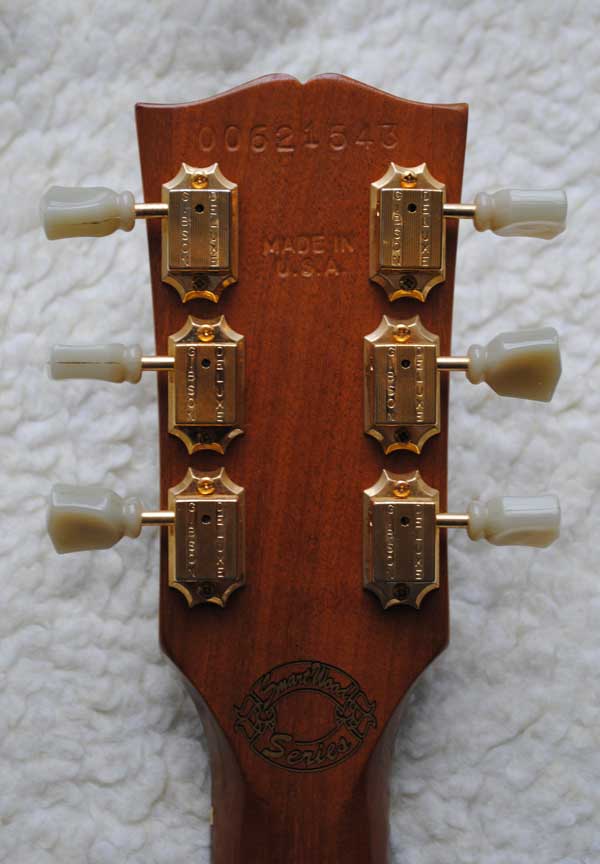- F-Serial Numbers on Les Paul Standard '59/'60 Models and Tribute/Plus Models The latest serial number system used by Epiphone has not yet been completely deciphered. The new 'F' models are made in China. The system uses running model numbers rather than a dedicated code for year, month, and place of manufacture.
- I looked up my Gibson Les Paul Epiphone number 198050195 but it wasn't recognized. The number is on the headstock and is ink stamped on. Aparently it is an Epiphone limited edition, it has the stamp on the back of the headstock, the one with the Euro symbol E.
- The Epiphone serial number decoder currently supports 12 serial number formats from 25 factories. Vintage numbers from 1932 to 1970 are supported. Serial numbers from 70' and 80's era Epiphone guitars made in Japan are not supported. The reason for this is that there is no reliable documentation from this time period.
- The Epiphone serial number decoder currently supports 12 serial number formats from 25 factories. Vintage numbers from 1932 to 1970 are supported. Serial numbers from 70' and 80's era Epiphone guitars made in Japan are not supported. The reason for this is that there is no reliable documentation from this time period.
THREE DIGIT SERIES (Number range) YEAR MADE: Comment: 006-319: 1966: Three digits in red ink: 320-999: 1967 (Feb-Nov) New Hartford; three digits in red ink: 1000.

Epiphone Serial Number Chart
 Epihone history in short.
Epihone history in short.Gibson Serial Number Lookup
| Anastasios Stathopoulos born in 1863, was a Greek luthier who started a mandolin and violin company in 1873 in Pellana, Greece. In 1903 he emigrated with his wife to New York. As luthier he started a year later a company that mainly produced mandolins. The company ran well, and therefore he took the Italian professional Henry cappielo employed. After the death of Anastasios in 1915, his son Epaminondas (Epi) take control over the company. Under his management the company grows to one of the biggest of its kind. A few years later, Epaminondas opens a factory where mainly banjos were made. In 1924 he registered the brand name Epiphone, a combination of his own name (Epi) with the Greek word for sound (phone). Shortly thereafter, Epi buys the banjo company Favoran and introduces the banjo Epiphone Recording line. Because of their quality and elegant design, it will be a great success. Due to the success of the banjo Recording line, a Recording line for guitars was also established in 1928 and a full line of f-hole archtop guitars was introduced in 1931. There are 12 models, including the top models: Broadway, Triumph and DeLuxe. Epiphone has been competing with Gibson for some time and with the introduction of the Epiphone Emperor in 1935, dealt a serious blow. Epiphone introduced the Electar series in 1937, an electric guitar with an adjustable pickup. Epaminondas dies in 1943 and the business is continued by his two sons Orpheus (Orphie) and Frixo. The cooperation between the two brothers is going badly and the company is going through hard times in the post-war years. By the mid-1950s, Epiphone is still making very few instruments. | In 1957, Epiphone is sold to CMI, Gibson's parent company, for $20,000.00. A full line of newly designed acoustic and electric guitars is launched in 1958. In 1960, Epiphone's production moved to the Gibson plant in Kalamazoo, Michigan. At the beginning of 1970 the production under license from Gibson moved from the USA to Japan. From 1983 there is also produced in Korea and then in 1995 also in Indonesia. In 2004, Gibson opened a factory in Qingdao, China for the production of Epiphone guitars. Although the vast production of Epiphone guitars takes place in these countries, some more exclusive models are still being made in the USA. Epaminondas Stathopoulos |
Epiphone Serial Number Lookup
